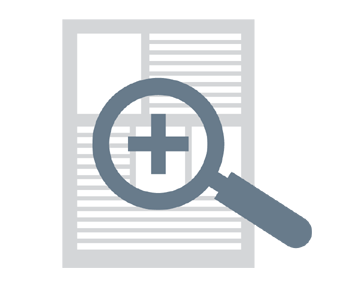PATENT BAR EXAM STRATEGIES
The Definitive Guide
There are many challenges to passing the patent bar exam.
The sheer volume of the material is a challenge since the MPEP is several thousand pages in length.
Even after you prepare, the lengthy, detail-oriented questions, the stress of the time limit, and the complexity of the material all mount to quite an obstacle.
This guide will provide you with tips for overcoming the difficulties, helping you move toward a passing score.

WHAT EXACTLY DO YOU NEED TO KNOW?
Section 1
During the patent bar, each test taker sits down to a computerized exam that pulls 100 questions from a larger data bank. That means your exam will be different from another individual’s exam even if you take the exam on the same day. So it’s impossible to give you a 100% accurate breakdown of exactly what will be covered on your test.
However, registered Patent Practitioners must know certain points from the MPEP to be even slightly competent to practice patent law. Because of that, the PTO will never deviate too much from having many of the basic topics on their test.
Chapters 200, 600, 700, and 2100 are hit the hardest on the test. These chapters cover application types, parts, and content of an application (including the claims), the examination of applications (including prior art rejections), and patentability.
These 4 chapters will likely always be the most heavily tested since they are very relevant for Patent Practitioners to do their job at even a basic level. So make sure you review these chapters in great detail to maximize your study time.
Additional chapters like 1800 which covers the Patent Cooperation Treaty and 1200 which covers Appeals are also heavily tested.
The America Invents Act (AIA) is one of the most heavily tested areas as well so it’s important to review supplements covering this material too.
Fortunately, you only need to get a 70% or higher on the exam so you’re allowed to miss a few dozen questions and still pass. It’s useful to spend your study time on the topics that are likely to get you closer to that 70%.

Beta Questions
Another point to make is that the USPTO tests out new questions. These are referred to as beta questions and they don’t factor into your score. Each test taker will be given 10 beta questions (out of the 100 questions on the test). You won’t know what is a beta question and what is a scored question.
Typically, the newest material is worked in as a beta question. That means if the test is updated mid-way through your studies, you can probably not worry as much about the updated material as it will likely be presented as unscored, beta questions (at least if you take the exam shortly after an update takes place).
Knowing the most heavily tested topics will help you prepare for the exam, but it’s important to note that you can expect to see many questions from a number of different areas as well. So it’s best to review as much as possible before you go in to take it.
HOW MUCH CAN YOU EXPECT TO LOOK UP?
Section 2
You will have access to an electronic copy of the MPEP in PDF format when you take the Prometric administered exam. This MPEP includes a limited search function which makes it more difficult to look topics up than what you may be used to when it comes to a PDF.
Each chapter is separated into its own PDF. Therefore, you need to know which chapter the question comes from before you do anything else. Once you have the right chapter opened up, you may search it for your topic. However, the search function is slimmed down.
It’s best if you are well versed in the different topics before you go in to take the exam. If you plan to look topics up in the MPEP, you will have to at least know which chapter to find it in.
We estimate that the average test taker is able to look up only about 10 to 15 test questions per test session. That means the average test taker can look up facts around 20 to 30 questions in total. Some test takers are able to increase this number, but no one ever has time to look up facts for each and every question.

DOES THE PATENT BAR ALWAYS TEST OVER THE LATEST VERSION OF THE MPEP?
Section 3
The USPTO is often behind on updating the Patent Bar exam. Sometimes by as much as a full year or more. If you’re studying without a course or program, make sure you’re using the right version of the MPEP and include any supplements in your preparation that will be covered. You can find out exactly what the exam covers from the USPTO. It’s often not the version of the MPEP available on the USPTO website so please check before you start studying.
It’s also very worthwhile to make sure any study materials you purchase have been updated. Many older courses are not updated to reflect the current version of the MPEP (plus supplements) although they are still being sold. Online courses will be the easiest to update (although some providers do not keep their online programs current). Be sure you’re dealing with a reputable company that updates their course when the exam is updated.

HOW IS THE AMERICA INVENTS ACT (AIA) FACTORED INTO THE EXAM?
Section 4
The Patent Bar exam tests over the America Invents Act or AIA, specifically in regards to 35 U.S.C. 102. You will be asked questions based on both pre-AIA 35 U.S.C. 102 (to a much lesser extent) and AIA 35 U.S.C. 102 materials in the exam. Therefore, you will need to know which set of rules to apply for any given question.
You can figure out whether to use the pre-AIA laws and rules or the AIA laws and rules simply by reviewing the dates given to you in the question.
Most questions dealing with 35 U.S.C. 102 cover AIA at this point. There are also other areas of the AIA covered on the exam as well. Must of the AIA has been incorporated into the current version of the MPEP. That which hasn’t made it in yet is covered within tested supplements.

ACTUAL QUESTION EXAMPLES
Section 5
For this next section, you’ll be presented with a few actual Patent Bar exam question samples and question models.
For each of the different model types of questions on the test, an example is given. The answer to the question is also provided, but for now, you don’t need to get too wrapped up in the answers or even the topics themselves (they won’t be clear until after you have extensively read through and studied the material). For now, it’s important to focus on the types of questions and to become familiar with the topics that will be tested.
Seven Types of Questions You Will Likely Encounter:
- Straightforward true or false questions
- Story questions with more information than you would ever need to answer the question (very difficult)
- Claim drafting questions (very difficult)
- Fill in the blank questions
- Finish the sentence questions
- Select from Roman numerals
- Miscellaneous

DETAILED BREAKDOWN OF THE TEST QUESTIONS
Section 6
1. Straightforward True or False Answer Choices
These questions are usually the easier ones. They contain straightforward phrasing and there is no background story to sort through. The phrases frequently found in these straightforward questions include:
- Which of the following is in accord with proper USPTO practice and procedure?
- Which of the following is not in accordance with proper USPTO practice and the procedures set forth in the MPEP?
- Which of the following is not a USPTO recommendation or requirement?
- Which of the following is true?
- Which of the following statements concerning (insert topic such as preliminary amendments) is/are in accordance with proper USPTO rules and the procedures set forth in the MPEP?
- In accordance with the USPTO rules and the procedures set forth in the MPEP, which of the following statements is most correct?
As you can see, the questions are set up very simply (there is no extensive background) and ultimately, you can approach choices A, B, C, D, and E as though each one was a true or false question. Occasionally, the choices for A, B, C, D, and E may cover completely different topics, or the PTO may throw in a choice for all of the above or none of the above.
Even with these little tricks, these are very straightforward questions. More often than not, the answer choices will be text taken word-for-word straight from the MPEP. You will just need to look for either the most correct or the most incorrect response. Make certain you distinguish which one you are searching for by writing correct/incorrect down on the scratch paper given to you the day of the exam or during your practice session. Then for each of the answer choices, ask yourself if the statement is true or false and indicate that by marking the appropriate letter on your scratch paper as well.
The following is an example of a straightforward question taken from a previous exam (the questions presented here may or may not be updated, but are taken right from old, not copyrighted exams so you can see the different types). Here it is:
Which of the following is in accord with proper USPTO practice and procedure?
A. Upon request to convert a provisional application to a nonprovisional utility application, the nonprovisional application is accorded a filing date as of the date on which the request to convert was filed, but the original filing date of the provisional application is preserved.
B. If a provisional application does not have a claim as filed, and a claim is not filed with a timely request to convert the provisional application to a nonprovisional utility application, the Office will notify the applicant and set a time period for submitting a claim for examination.
C. A provisional application filed in November 2014 is entitled to the right of priority under 35 U.S.C. § 119 of a copending utility application for patent filed in Great Britain in January 2014.
D. A request filed in January 2014, to convert a provisional application filed in the USPTO in April 2013, to a nonprovisional utility application is timely if filed after the abandonment of the provisional application, i.e., after the pendency of the provisional application, but within 12 months of the filing date of the provisional application if no petition to revive has been filed and granted.
E. A nonprovisional utility application filed under the provisions of 37 CFR § 1.53(b) in January 2014, and claiming the benefit of the earlier filing date of a provisional application does not need to be filed during the pendency of the provisional application.
ANSWER: (B) is the most correct answer. 37 C.F.R. § 1.53(c)(3) requires the presence of a claim to convert a provisional application to a nonprovisional application. The Office will set a time period within which a claim must be submitted for the Office to grant the request if the provisional application does not have a claim and a claim is not filed with the request. (A) is not the most correct answer. There is only one application, and that application has a single filing date, the filing date of the provisional application. (C) is not the most correct answer. (D) is not the most correct answer. 37 C.F.R. § 1.53(c)(3) requires that any request to convert a provisional application to a nonprovisional application be filed prior to abandonment of the provisional application. (E) is not the most correct answer. A nonprovisional application claiming the benefit of a provisional application must have been filed during the pendency of the provisional.
As you can see, if you have a solid grasp on the topic of converting a provisional application to a nonprovisional application, (which is covered in MPEP 200) this type of question would not give you too much trouble.
And if you don’t know anything about patent law yet at this time, don’t worry, you’ll understand all this once you go through your study materials or review course. We’re just providing you with example questions here so you get an idea of what type of questions are on the exam.
2. Story Questions
These questions are usually fairly difficult, especially compared to the straightforward true/false answer choice questions mentioned previously. The story questions will provide you with a detailed background, most of which happens to be completely irrelevant.
These questions require a great amount of time just to read through, let alone to sift out the unnecessary information. After you read through the story, there is usually a sentence stating “based on the above, which of the following statements is most correct?”
Therefore, you can approach these in the same manner as the straightforward true/false answer choice questions by marking a T or F by each answer choice. And sometimes, as we will show you, it is possible to answer the question right without even reading the question itself.
Since the exams are administered on a computer, the PTO had stated in the past that they’ve trimmed down the size questions (due to the fact that they will not fit on a computer screen). However, we still hear from clients that they saw many questions like these on the exam. There may be fewer than there were in the past and hopefully, none will be more than a paragraph in length (in the past, there were a few where just the question was an entire page long). However, they still ask you story questions designed to provide you with more information than you need to answer the question.
For many of these questions, you need to apply the information from the MPEP in order to answer the question correctly. So in many cases, you may want to mark these questions on the test and move on to easier questions. You can come back to all the marked questions at the end.
The following is an example taken from a previous exam …
Question: Joe and Jim, local businessmen, conceived the idea of an improved fishing pole. Thereafter, they had a prototype made, and after successfully testing the pole, they filed a patent application on their invention. Both men are widowers, Joe with a grown son, and Jim with a grown daughter. Joe and Jim invite their children to come to the next Lions Club social event, and it isn’t long before the children are thinking in terms of wedding bells. Ecstatic at the thought of the upcoming marriage, Joe and Jim decide to assign their patent application to their children as a wedding present. Accordingly, they execute a document properly assigning their patent application to their children effective on the date of their marriage, and mail it to the USPTO with a cover letter requesting that the document be recorded. Shortly after the document is recorded, Joe’s son meets another woman and breaks off his engagement with Jim’s daughter. In light of this scenario, which of the following statements is true?
- Since the assignment was conditioned on the marriage of the children, and the condition was not fulfilled, the USPTO will regard the assignment as without effect for Office purposes.
- Since the assignment was recorded, the USPTO will require the parties to certify that the marriage condition was fulfilled before the assignment will be effective for Office purposes.
- Since the assignment was recorded, the USPTO will not determine whether the marriage condition was fulfilled and will regard the assignment as absolute.
- Since the USPTO does not record conditional assignments, the recording of the assignment document will be regarded as inadvertent, and without effect for Office purposes.
- Since the assignment was recorded, the USPTO will regard it as a determination of the validity of the document and the effect that the document has on the title to the patent application.
The best way to approach this question is to jump immediately to the answer choices in order to determine what the general topic of the question is. In this case, the topic is assignments (found in MPEP 300). Once you’ve established the topic, quickly skim through the question, underlining the relevant information. The only information necessary in the story at all is the four words, “the document is recorded,” which is found in the last sentence. The MPEP states that once a document is recorded, the PTO will not check to see if any conditions of the recordation have been filled. Therefore, the correct answer is answer C. Since the assignment was recorded, it will be regarded as absolute.
Answers:
You don’t need to know what was invented, the inventors’ names, or that they are widowers. The details of this question are ridiculous, so don’t waste your time with any of them.
- False – A) The Office does not check whether conditions of an assignment are fulfilled or not.
- False – B) Since the Office will not determine whether a condition has been fulfilled, the Office will treat the submission of such an assignment for recordation as signifying that the act or event has occurred.
- True – C) Assignments that are made conditional are regarded as absolute assignments for Office purposes, the PTO will not check to see if such conditions have been fulfilled.
- False – D) The Office will record any properly made assignment.
- False – E) The recording of a document is not a determination by the Office of the validity of the document or the effect that document has on the title to an application or patent.

3. Claim Drafting Questions
Questions dealing with claim drafting are complicated. The patent bar has focused less on these and more on the America Invents Act lately, but this can always change.
You will have to read through the actual question in order to figure claim drafting questions out. Therefore, these questions are generally some of the most difficult on the test. In addition to understanding the rules governing claim drafting, you have to apply your analytical skills to arrive at the correct answer (fortunately, scientists and engineers have an extensive amount of practice thinking logically so you do have an advantage.)
The following is an example taken from a previous exam …
Question: A patent application filed in the USPTO contains the following three original claims, including product by process Claim 3:
Claim 1. A method for making an Ethernet cable comprising the steps of A, B and C.
Claim 2. The method of claim 1, further characterized by the step of D.
Claim 3. The Ethernet cable as in any one of the preceding claims. In the first Office action, the examiner objects to Claim 3 as being an improper dependent claim and requires cancellation of the claim. Following proper USPTO practices and procedures, which of the following replies best overcomes the examiner’s objection and provides the client with the broadest patent protection?
- Amend Claim 3 to read: “The Ethernet cable as made by the process set forth in claims 1-2.”
- Cancel Claim 3.
- Cancel Claim 3 and add Claim 4, which reads: “An Ethernet cable made by a process comprising the steps of A, B and C.”
- Cancel Claim 3 and add Claim 4, which reads: “An Ethernet cable made by a process comprising the steps of A, B, C and D.”
- Cancel Claim 3. Add Claim 4, which reads: “An Ethernet cable made by a process comprising the steps of A, B and C.” Add Claim 5, which reads: “An Ethernet cable made by a process comprising the steps of A, B, C and D.”
Answers:
- False – A) This is an incorrect multiple dependent claim.
- False – B) Canceling claim 3 will overcome the rejection, but then the application does not have a claim to the Ethernet cable made using the processes set forth in either claim 1 or claim 2.
- False – C) Leaves application without a claim to the Ethernet cable made using the processes comprising the steps of A, B, C and D.
- False – D) Leaves application without a claim to the Ethernet cable made using the processes comprising the steps of A, B and C.
- True – E) Canceling claim 3 overcomes the examiner’s objection. The addition of claims 4 and 5 provide the client with patent protection in product-by-process format for the cable by both methods of manufacture. If claim 4 is invalid, claim 5 may remain valid.
There’s no doubt, these are some of the hardest questions on the exam. You’ll need to understand the laws governing claims and then read through the questions carefully.
4. Fill in the Blank
There are never very many of these on any given exam and they are usually very easy to answer (provided you learn the material first). There is no trick to answering these questions. They are very straightforward and again, you won’t see many (if any at all).
5. Finish the Sentence
These questions are fairly easy also. You should not need to spend very much time coming up with the correct response, provided you know the topic or can look it up quickly.
The following is an example taken from a previous exam session …
Question: A prima facie case of obviousness requires a suggestion, teaching, or motivation to modify the references to produce the claimed invention. The suggestion, teaching, or motivation is established:
- only if the suggestion, teaching, or motivation to do so is found in the references themselves.
- if the claimed invention is within the capabilities of one of ordinary skill in the art.
- by the mere fact that the references can be combined.
- if the suggestion, teaching, or motivation is found either in the references themselves or in the knowledge generally available to one of ordinary skill in the art.
- (A), (B), (C) and (D).
Answers:
- False – A) Obviousness is not limited to being found only in the references themselves.
- False – B) This is not sufficient by itself to establish prima facie obviousness.
- False – C) This is not sufficient to establish prima facie.
- True – D) Correct – obviousness can only be established by combining or modifying the teachings of prior art to produce the claimed invention where there is some teaching, suggestion or motivation to do so found either in the references themselves or in the knowledge generally available to one of ordinary skill in the art.
- False – E) A, B and C are all false.
6. Select from Roman numerals
Questions following the pattern presented below can pose some difficulty. However, if you read the question carefully and then go through each of the answer choices – I, II, III, and IV – marking each one with either a T or F (you will need to write out the Roman numerals on your scratch paper if you are taking a computerized exam), it should be easy to determine what the correct response is.
Question: Which of the following properly creates a statutory bar to the patentability of the applicant’s claimed invention?
I. Applicant’s invention was sold in Tokyo and New York more than one year prior to the effective U.S. filing date, but the sales were merely attempts at market penetration.
II. Applicant’s invention was experimented with and tested to further develop the invention more than one year prior to the effective U.S. filing date, but important modifications resulted from the experimentation causing the invention to be reduced to practice after the effective U.S. filing date.
III. Applicant’s invention was sold in Tokyo more than one year prior to the effective U.S. filing date, but the sale was merely market testing of the invention to determine product acceptance.
A. I.
B. II.
C. III.
D. I and III.
E. None of the above.
Answer: (A) is the most correct answer because I is the only correct answer. Sales in the U.S. occurring more than one year before the application leads to a statutory bar. Experimental testing is allowed so II does not create a statutory bar. III does not create a statutory bar because the sale was made in Tokyo, not the U.S.
7. Miscellaneous Questions
These are very straightforward questions. There are no tricks involved. Here’s an example from a previous exam:
Which of the following documents, if any, must also contain a separate verification statement?
- Small entity statements.
- A petition to make an application special.
- A claim for foreign priority.
- An English translation of a non-English language document.
- None of the above.
Answer:
E) is correct because the Office did away with separate verification statements several years ago.
Those are the main question types on the exam. They pull questions from many different chapters across the MPEP and as you can see, some of the questions are pretty straightforward question types while others fall into the ‘trick question’ type of category. Still, some pull facts right out of the MPEP while others will require you to apply facts from the MPEP. It’s important to practice answering questions from each of these question styles so you don’t waste any time the day of the test.
TIPS FOR PASSING THE EXAM
Section 7
In this section, we’ve put together a summary of a few important test tips. It’s wise to read through these, memorize them, and practice using them.
Tip #1
There are 50 questions per exam section. Do not leave any answers blank. You may as well guess blindly on a question rather than leave it blank as there is no penalty for incorrect selections. The test is multiple-choice; therefore, you have a 1 in 5 chance of getting a particular question right by guessing. If you can narrow down the answer choices, your odds of guessing correctly will only improve. Out of 5 questions that you don’t know the answer to or do not have time to even read, you should statistically get 1 right just by blindly guessing. In some instances, that can make the difference between passing and failing the exam.
Tip #2
Skip the longer questions that require more reading. Save the longer questions for last (especially those you’re finding confusing) and answer the shorter questions first. You can mark difficult questions or those that you want to review at the end during the computerized exam.
The easiest and most straightforward questions are those that begin with something like: “According to USPTO rules, which of the following are true.” Most of the answers to these questions come straight from the MPEP. All the questions are worth the same amount of points, so there isn’t any reason to go after the longer, more difficult questions before attempting the easier, shorter ones.
Tip #3
Approach every answer choice as if it’s a true or false question. This will help to simplify the questions. Once you’ve identified whether a particular choice is true or false, write either ‘T’ or ‘F’ down next to the corresponding letter (A, B, C, D, or E) on your scratch paper.
Tip #4
Be sure to distinguish whether you are looking for the most correct answer or the most incorrect answer. You will have scratch paper on the day of the exam. Write down on your scratch paper which of the two you are looking for (you may indicate this by simply writing correct or incorrect next to the number). Otherwise, you may get confused and answer a question incorrectly just by interpreting it wrong. Once you’ve determined what you’re looking for, then go through the answer choices and mark each one true or false. You will always be able to find the correct answer this way.
Tip #5
Don’t get too involved with the story-type questions. The best method for answering these is to read the very last sentence of the question and then look over the answers. In some cases, you will be able to determine whether a choice is true or false without reading the preceding story. If you must read the story at all, skim through it quickly, circling the relevant information. All of the story-type questions will contain more information than you will ever need to determine the answer. These questions are designed for you to waste time reading through unimportant information. Remember to keep this in mind.

Tip #6
If a question seems as though there isn’t a correct answer or as though there is more than one correct answer, but no choice for both; don’t automatically assume you are wrong. What you think is the correct, missing answer may actually be right. Is this fair? Of course not, but unfortunately, there are times when the PTO will have questions that they do not provide a correct answer for. Any answer you choose will be correct in these cases because credit will be given for that question as long as a selection is marked.
There should not be many questions like this on your exam. We do know this was happening in the past and although it cannot be confirmed now, I wouldn’t be surprised to hear that there’s still a question or two like this in the question pool.
Tip #7
While there will be many longer questions and even some that ask you to apply the material, the PTO always includes many straightforward questions on the exam. These are taken word-for-word from the MPEP while others will have only slight changes to them. These are like free questions if you prepare well.
Additional Resources
- Patent Bar Exam Requirements
Discover the requirements for taking the Patent Bar exam. - Why Take the Patent Bar?
Learn why many are taking the patent bar.
- Patent Bar Review Course
Find out whether or not you meet the requirements to sit for the patent bar exam. - Patent Bar Exam Strategies
Learn tips and strategies for passing the patent bar exam with less stress.
